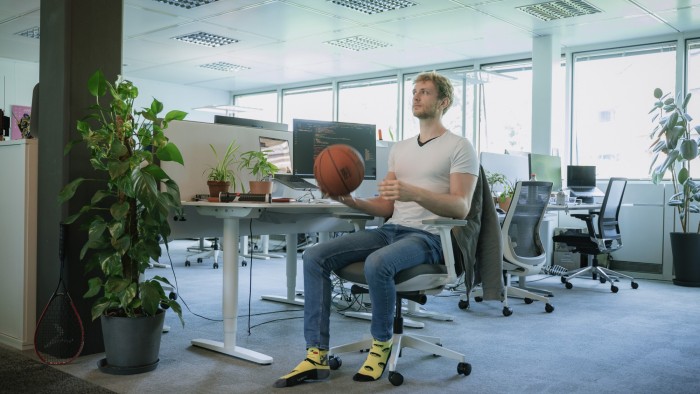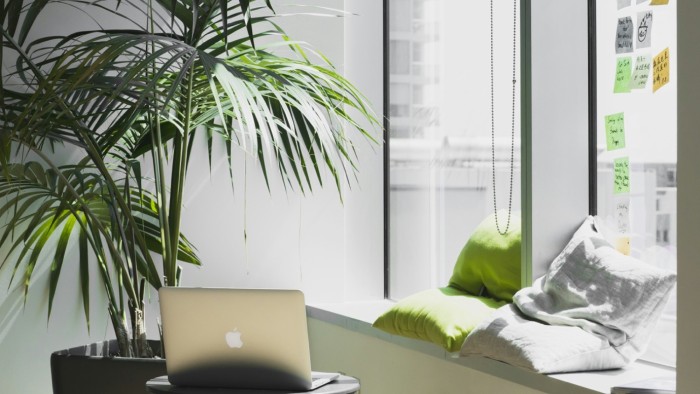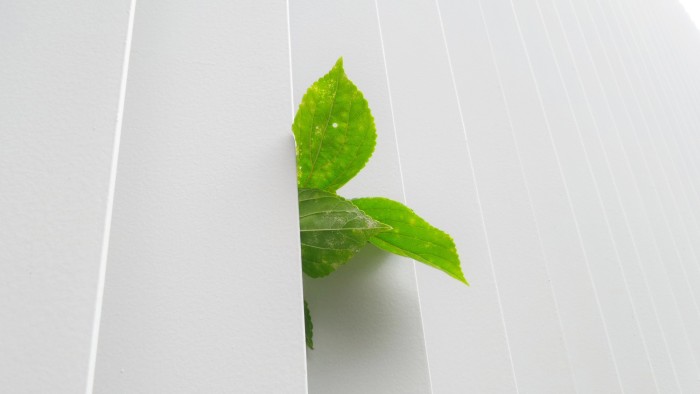Solarpunk, when life and innovation become part of the decision-making process
Dylan Field, CEO of Figma, gave an interview at SXSW 2024 - a festival of music, film and interactive media - where he shared his vision of design for the future by highlighting an interesting movement: Solarpunk. This movement offers a less anxiety-provoking and much more positive perspective on shaping a world where life and sustainability are at the heart of every innovation.
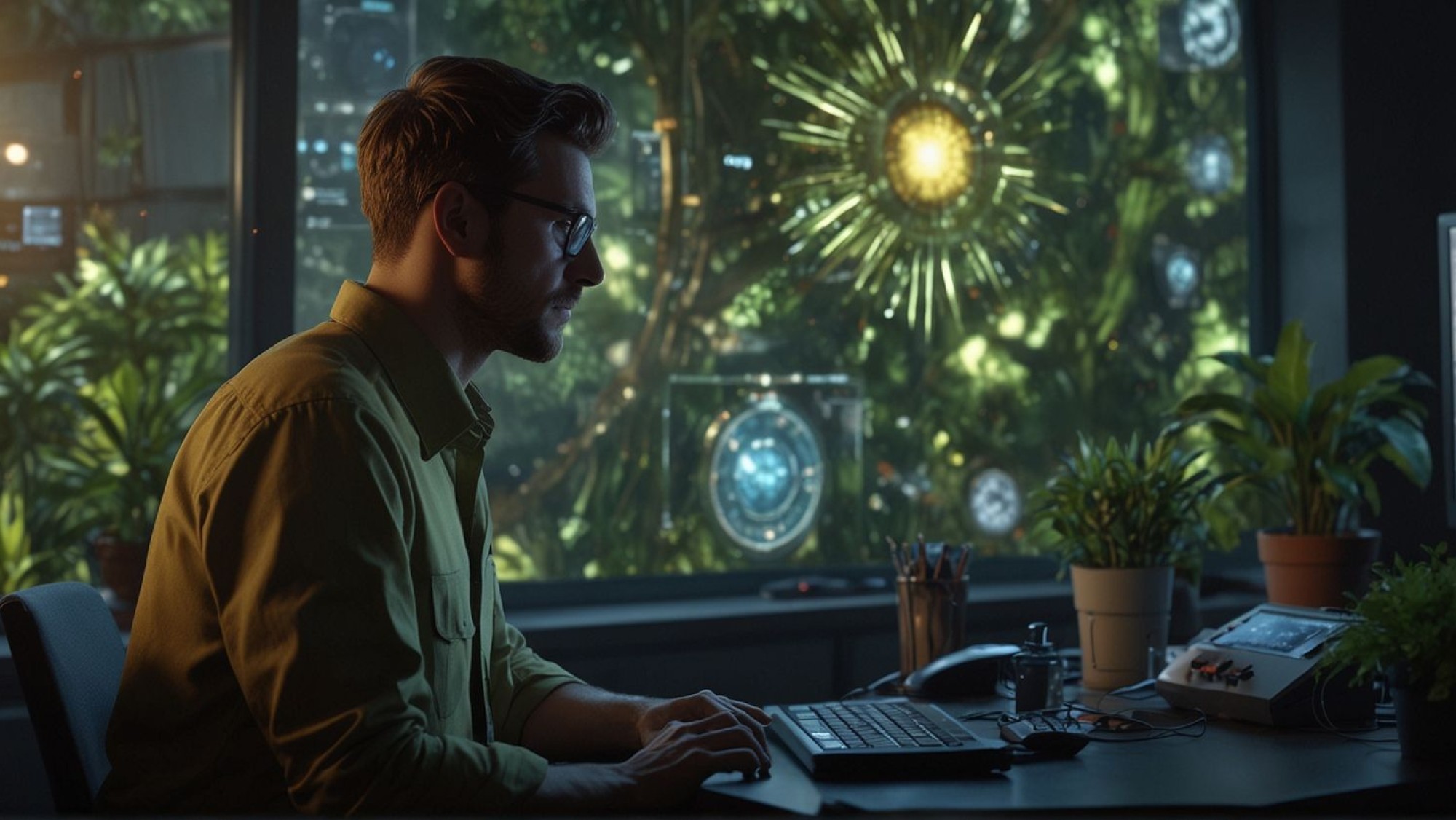
In short, they sound more like achievable principles, without being a far-fetched utopia. After a great deal of research, this movement is even rather... within reach. But then, how clever could it be to incorporate some of the Solarpunk principles into design?
Why punk?
The beginnings of Solarpunk are thought to have appeared in 2008, notably in an article on the Republic of Bees blog, where it echoed the appearance of the Beluga Skysail, a revolutionary cargo ship that saved up to 20% on fuel thanks to an innovative sail. Then, initiated as a realistic offshoot of the Steampunk movement, Solarpunk gained popularity thanks to South American and South African thinkers who proposed a vision where thoughtful actions in harmony with the environment would shape a positive future.
In 2019, the Solarpunk community manifesto formalised the fundamental principles of the movement.
Solarpunk is at once a vision of the future, a thoughtful provocation, a way of life and a set of achievable proposals to get there. - Introduction to the principles of "The Solarpunk Manifesto ".
Based on intelligent and sustainable innovation, individual autonomy and the importance of the living in our actions and thoughts, Solarpunk offers an alternative to the Cyberpunk dystopia, which presents a vision of a fatalistic society torn apart by over-consumed technology, on the brink of environmental disaster, run by big business and where social gaps are becoming ever wider.
"...find a way to make life better, and for generations to come." - The Solarpunk Manifesto
This positive vision embraces cultural changes on larger scales such as agro-ecology, sustainable urbanism or renewable energy communities. And at no point are technologies excluded. On the contrary, they are integrated and made aware, with the aim of making individuals more autonomous, to the point of abandoning the idea of "smart cities" in favour of "smart citizens and smart communities".
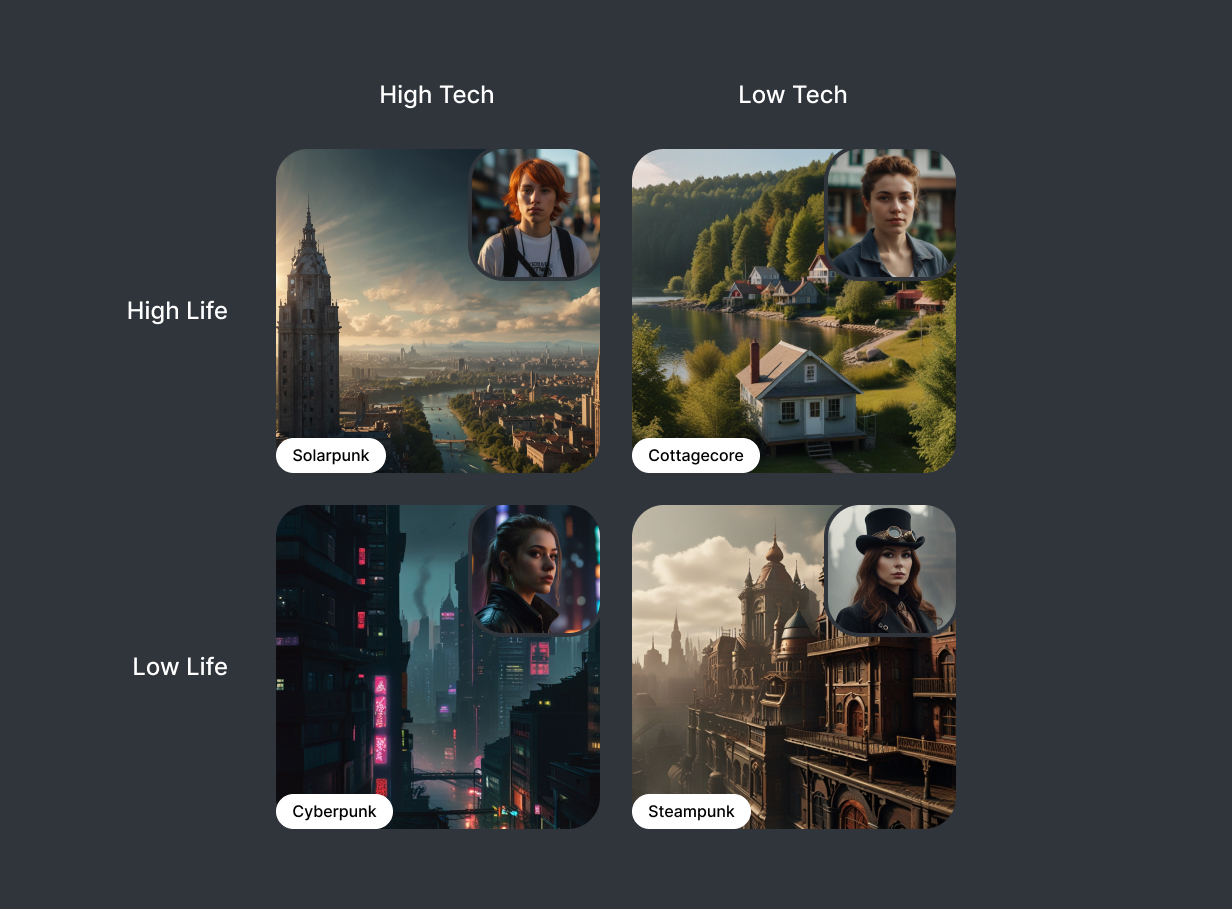
Today, this movement is gradually gaining visibility through various media such as art, architecture, literature, fashion, music, board games and video games, featuring modern cities where nature, urbanism, technology and humans coexist harmoniously. Unlike the usual utopias, Solarpunk does not eradicate the marginalised, but favours a benevolent and transparent diversity where each individual has his or her place for the well-being of all living things.
A movement that is already part of the landscape
Solarpunk is rooted in a wider landscape of movements and currents of thought that share similar objectives of sustainability, inclusion and innovation.
Ecodesign is an approach that aims to reduce the environmental impact of products throughout their life cycle, finding innovative and sustainable solutions and encouraging the use of environmentally-friendly manufacturing practices. The movement is also strongly guiding the approach of current websites by limiting the media used, calculating the CO2 impact of each page and favouring sustainable hosting solutions.
The Slow Life, or Slow Movement, which encourages a reduction in the frenetic pace of modern life and a re-evaluation of priorities, focusing on the quality of well-being rather than the quantity of activities. This resonates with the Solarpunk movement in its more thoughtful approach to technology and consumption.
Regenerative Design which aims for an approach where systems and processes restore and strengthen ecosystems promoting environmental health and resilience. This movement also shares the same positive vision of creating solutions that benefit both human beings and the environment.
New Pedestrianism, or New Urbanism, share common concerns for the sustainability of urban environments. It aims to reduce dependence on cars by promoting walking, cycling and public transport, and to reduce carbon emissions in order to improve air quality. But that's not all: New Pedestrianism, like Solarpunk, aspires to create neighbourhoods that meet human needs, where it is pleasant and safe to live, work and play, while fostering conviviality between communities.

How can designers draw inspiration from this movement?
The Solarpunk movement is described as an active process of adapting to change by placing living beings - including us, human beings - at the heart of decision-making. Some of these principles can serve as a source of inspiration in the design of digital products.
Harmony between technology and life
In the concept, technology is at the service of the living, acting as a support rather than a controlling force. It is used as a scaffold, an ephemeral or punctual base that allows living things to develop. Technology can replace certain actions, but with the aim of supporting the user and the living being towards autonomy through useful and benevolent optimisation.
Reducing and slowing down the experience on a human and local scale
By adopting an approach similar to that of 'Pace Layering' or 'Slow Life', designers are invited to design products that fit into the daily lives of users, with an approach that follows their rhythm.
By following a slower, more human rhythm of life, designing a user experience is more thoughtful, placing the emphasis on product quality rather than quantity.
For example, instead of creating applications focused on productivity and the rapid consumption of information, designers could create tools that encourage interpersonal connections, contemplation and awareness.
The approach does not necessarily aim to limit economic growth, but rather to redirect the company's priorities and objectives towards more holistic and sustainable values. This may involve a change of perspective on what business success really means and how it is measured. It could mean companies adopting more circular and collaborative business models, where value creation is defined not just in financial terms, but also in terms of its positive impact on employees, society and the environment.
Rethinking the social landscape
The movement emphasises the integration of living beings at the heart of design processes. Digital products and designers can play a crucial role in building inclusive and sustainable environments. This means designing products that facilitate communication, collaboration and citizen participation at local level.
For example, platforms that encourage the exchange of knowledge and collective problem-solving, promoting benevolence and inclusion. Designers could also create products that visualise data on the local environment, informing residents while inviting them to take action.
Offering autonomy
By exploring a multi-faceted approach, designers challenge established norms and enable the discovery of new avenues for socially responsible and sustainable innovation. To do this, it is important to include a diversity of perspectives and values, taking into account the needs and aspirations of different communities, cultures and individuals.
For example, designers could collaborate with marginalised communities to develop solutions that meet their specific needs and strengthen their autonomy and resilience. This inclusive and participatory approach enables designers to contribute to a future where innovation is a common good enabling long-term sustainability.

Towards a more positive future
So Solarpunk is much more than a utopian vision of the future: it offers a concrete framework for rethinking design methods and society with a view to sustainability and inclusion, while already building on current concepts such as eco-design and New Pedestrianism.
Drawing on these principles could enable designers to help shape a world that benefits the environment and people - a brighter future ☀️
